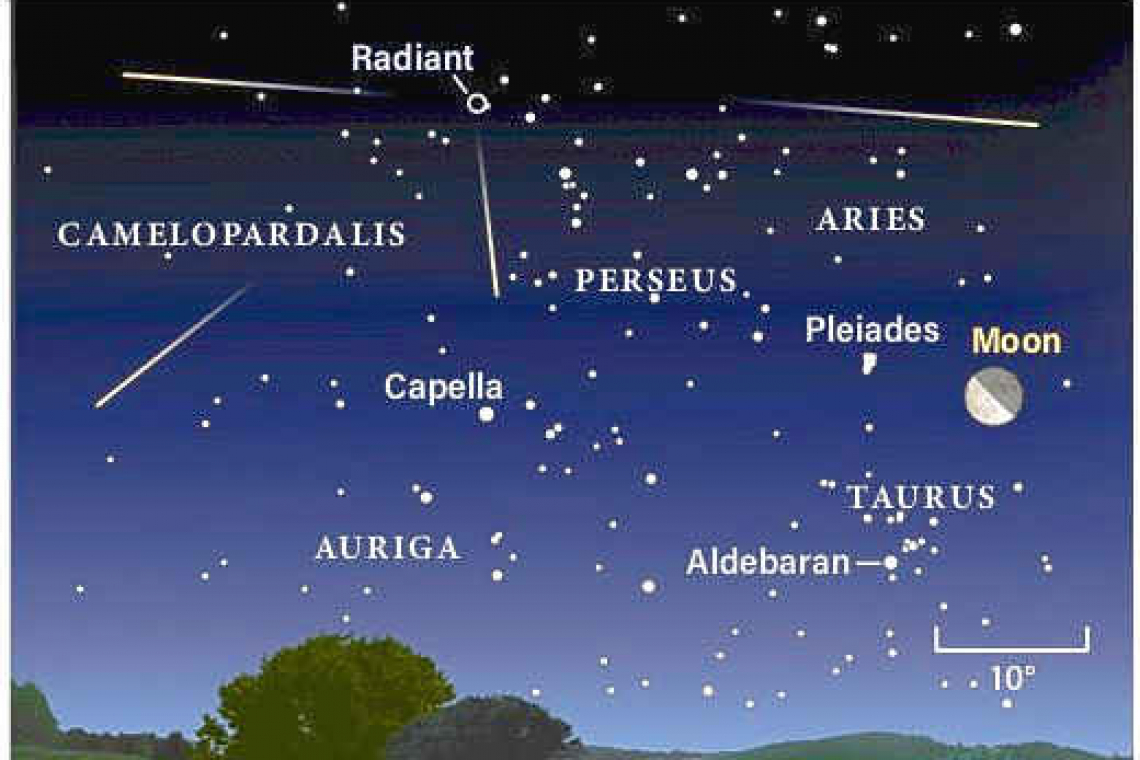~ St. Maarten’s Backyard Astronomy for August 13 – 15 ~
Sun rises at 5:54am
Sun sets at 6:39pm
Lunar phase: first quarter, waxing crescent
Moon rises at 11:25am, Saturday
Moon sets at 11:13pm, Saturday
August is the time to enjoy meteorites! The Perseid Meteor Shower is an all-time favourite because it offers loads of shooting stars, as much as two per minute! It takes place during the warm nights of late summer, with the best viewing in the early morning hours. For this reason, you may choose to plan a siesta in the afternoon hours and escape from the heat of the day and then watch the greatest show not on this earth in the cool of night! Not only that, but 2021 is expected to be an excellent year for this particular celestial event!
No matter where you live worldwide, the 2021 Perseid meteor shower will probably produce the greatest number of meteors per minute of the year. The peak date for best viewing fell on a couple of mornings ago, but this weekend will still be a prime viewing opportunity.
Here are some helpful tips for viewing the Perseids.
What do I need?
No special equipment is needed and no particular knowledge of the constellations, either. Telescopes and binoculars do not help; they are in fact a hindrance to viewing meteors.
Where should I go?
Find a wide-open sky far from street lights. The meteors will all seem to start from a single point in the sky; this is what we call the “radiant point”. These will appear to originate in the constellation of Perseus, near Cassiopeia in the northern sky. But fear not, you really can't miss seeing the streaks, as long as you keep looking up. That is because as you stand watching, you’ll invariably see meteors streak all the way across the sky. That is why a wide-open sky will give you the best show.
When should I watch?
The best time to view meteors is generally between midnight and dawn, the Perseids are no exception. By the early morning hours, they’ll appear to be raining down from overhead.
Want to watch during the evening hours?
Give it a try! There is a slight chance that you might catch the sight of an earth-grazer – that is a long, slow, colourful meteor. It will be travelling more or less horizontally across the evening sky. Earth-grazer meteors are rare but very memorable. Perseid earth-grazers appear before midnight, when the radiant point of the shower is close to the horizon.
You want a dark sky for watching meteors. In a dark sky, you may see up to 60 meteors per hour at the shower’s peak. Will you see over 100 per hour, as in some years passed? Perhaps. No promises. But you won’t know unless you look.
Thank you for keeping up with the Night Sky articles designed for St. Maarten sky viewing. If you are out later on in the week, each star rises about four minutes earlier each day than written here, and the moon rises 50 minutes later. Night Sky is researched and compiled by Lisa Davis-Burnett. Earthsky.org is a key resource for information and images. Questions or comments? Email This email address is being protected from spambots. You need JavaScript enabled to view it.







